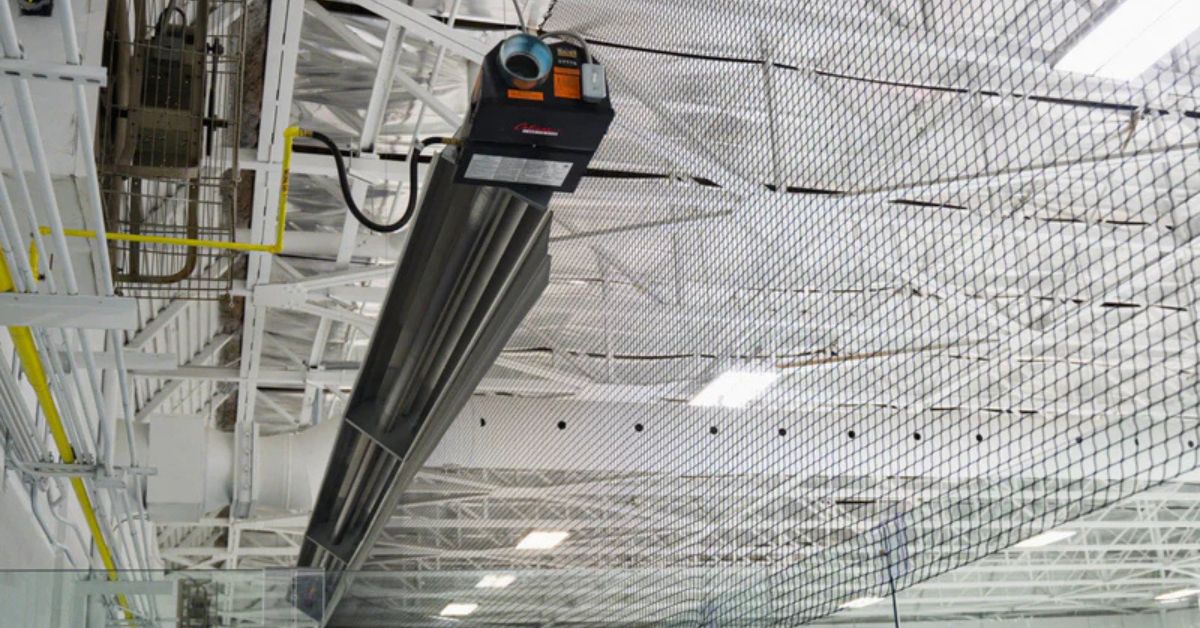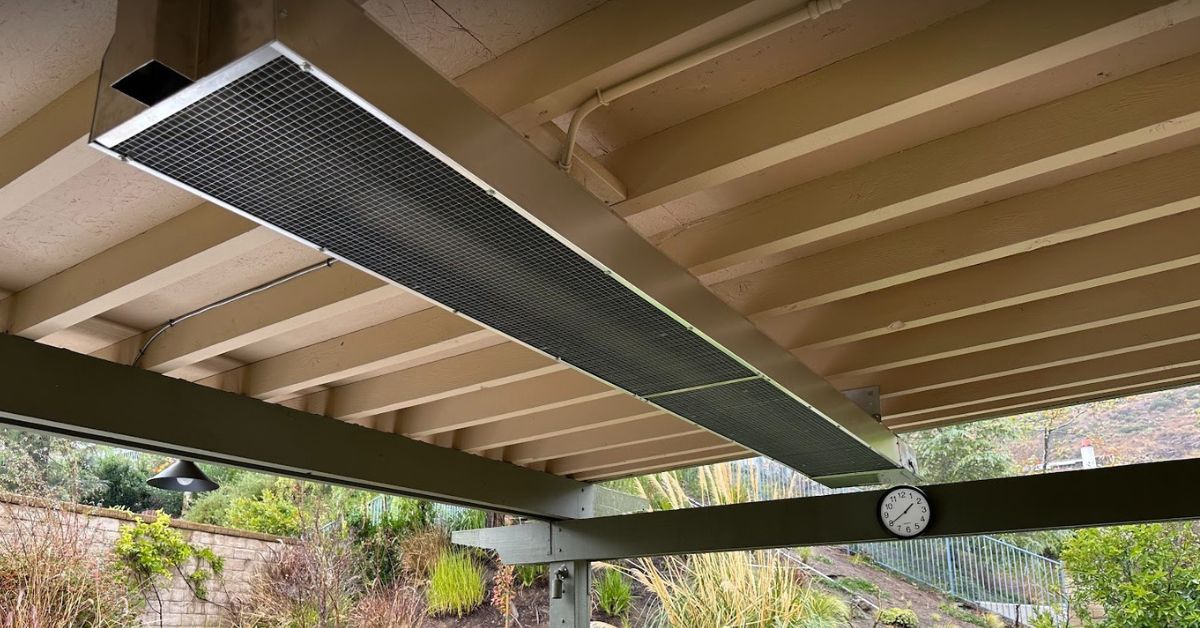Many heating systems can turn spaces into allergen problem zones. Forced-air furnaces blow dust, pet dander, and other particles throughout the space, while baseboard heaters create air currents that stir up settled allergens. For people with respiratory sensitivities, winter heating can become a constant struggle between staying warm and breathing comfortably.
The benefits of infrared heaters for people with allergies extend beyond temperature control. These heating systems offer relief for allergy-sufferers in residential as well as commercial environments because of their specialized design. Instead of heating air and circulating it around a room, infrared heaters directly warm objects and people through electromagnetic radiation.
This technology eliminates many of the triggers that make traditional heating systems problematic for allergen-sensitive individuals. Learn how infrared technology works and understand why infrared heaters are popular in residential garages, outdoor patios, offices, and warehouses.
How Infrared Heaters Work
Infrared heaters generate heat through electromagnetic waves that travel at the speed of light. When these waves hit objects, furniture, or people, they convert to thermal energy and create warmth. The process mimics how the sun heats the Earth.
Most infrared heaters use carbon fiber, ceramic, or quartz elements to generate heat. These materials reach high temperatures quickly and maintain consistent output without burning dust and other particles that might settle on heating elements.
Reduced Air Circulation Prevents Allergen Distribution
Forced-air heating systems create constant air movement that distributes allergens throughout a space. Dust mites, pollen, pet dander, and mold spores become caught in air currents and spread to areas where they might otherwise remain settled. This circulation can trigger allergy symptoms even in people with mild sensitivities.
Infrared heaters eliminate this problem by heating objects directly rather than warming the air. Without fans or blowers creating air currents, allergens stay where they naturally settle instead of repeatedly becoming airborne. Reduced circulating particles can lead to noticeable improvements in indoor air quality.
Infrared heating also prevents the drying effect common with forced-air systems. Maintaining natural humidity levels preserves the protective moisture in nasal passages and respiratory systems. The end results are less irritation and more comfortable breathing.
No Dust Burning or Chemical Emissions
When you turn on your furnace or space heater for the first time each season, you might noticed a distinct “heated dust” smell. The burning that occurs in standard heating elements releases particles and odors that can irritate sensitive respiratory systems.
Infrared heaters operate at lower surface temperatures, which prevent dust burning while heating effectively. The absence of combustion means that no chemical emissions or byproducts enter the indoor air. This clean operation makes infrared heaters suitable for people with multiple chemical sensitivities or who react to the combustion products from gas heating systems.
Many infrared heaters require no vents, ducts, or gas lines, eliminating potential sources of air contamination. Electric infrared units plug directly into standard outlets and begin heating immediately without any warm-up period that might produce initial odors or emissions.

Improved Moisture Retention
Dust mites thrive in extremely dry or very humid conditions, and forced-air heating systems remove moisture from indoor air as they operate. Dry air irritates the nasal passages, throat tissues, and respiratory systems. Therefore, allergy symptoms worsen, and people become more susceptible to airborne particles.
Since infrared systems heat objects rather than air, they don’t extract humidity during operation. Moisture retention keeps respiratory tissues healthy and reduces the static electricity that can make dust and other particles more likely to become airborne.
Clean Indoor Air Quality
The combination of reduced air circulation, no dust burning, and moisture retention contributes to overall improvements in indoor air quality. Infrared heaters don’t introduce new pollutants or allergens into living spaces, and they avoid disturbing existing particles that have settled on surfaces.
This cleaner operation particularly benefits people with asthma, who may experience fewer triggered episodes when the indoor air remains stable and free of constantly circulating irritants. The absence of mechanical noise also eliminates vibrations that might shake dust loose from surfaces or ductwork. Some infrared heater models also include additional built-in air purification features.
Different Types of Applications
Infrared heating works effectively in various residential and commercial settings. Home applications include bedrooms, living areas, home offices, and workshops. The zone heating capability allows targeted warmth in specific areas without heating entire buildings.
Commercial and industrial applications include:
- Office buildings where employees have varying temperature preferences
- Warehouses where traditional heating would be inefficient
- Retail spaces and restaurants that need comfortable temperatures for customers
- Health-care facilities that must adhere to air quality standards
- Schools and educational facilities with sensitive occupants
The scalability of infrared systems makes them suitable for single rooms or entire buildings, depending on the occupants’ heating requirements and allergy concerns.

Installation and Maintenance Advantages
Infrared heaters require minimal installation in most applications. Portable units need only electrical connections, while mounted systems typically require basic bracket installation. The absence of ductwork, gas lines, or complex ventilation systems reduces installation costs and potential sources of air quality problems.
Maintenance requirements remain minimal because infrared heaters have few moving parts that could accumulate dust or require regular cleaning. No filters need replacement, and no ducts require professional cleaning to remove accumulated allergens. Many systems operate for years without requiring service calls or component changes that might temporarily affect air quality.
Make the Switch to Infrared Heating
The benefits of infrared heaters for people with allergies make these systems increasingly attractive for anyone prioritizing indoor air quality alongside heating efficiency. Evaluate various allergy triggers and the space’s heating needs—with these factors in mind, you’ll soon find that gas-powered infrared heaters are the ideal choices.
Individuals can find substantial allergy relief as well as responsive temperature control with infrared alternatives. The combination of direct heating, reduced air circulation, and minimal maintenance creates healthier indoor environments that support respiratory comfort throughout heating seasons.
Calcana offers high-quality infrared heaters that can accommodate a wide variety of environments. If you’re ready to minimize allergens in your workspace or home garage, contact Calcana today!




Leave a comment
This site is protected by hCaptcha and the hCaptcha Privacy Policy and Terms of Service apply.